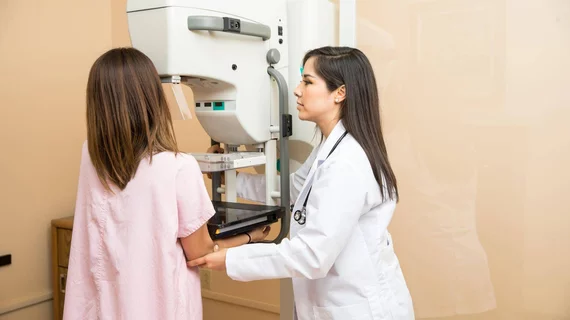The impact of state-level digital breast tomosynthesis coverage mandates
State-level mandates that require insurance coverage of digital breast tomosynthesis have shown to increase its use while also resulting in an overall decrease in the exam’s price.
A study published in JAMA Network Open combed through millions of screening mammograms to evaluate associations between state-level legislation that requires insurers to cover digital breast tomosynthesis (DBT) exams and its overall use and price. Although the mandates did result in better prices and more widespread use of the breast imaging exam, out-of-pocket expenses did not waver.
“Over the past decade, breast cancer screening has undergone a substantial technological shift in the US in which digital breast tomosynthesis has supplanted standard 2-dimensional (2D) mammography alone as the standard of care,” corresponding author Ilana B. Richman, MD, from the Department of Internal Medicine at Yale University School of Medicine, and co-authors wrote. “However, important questions remain about whether DBT improves health outcomes compared with 2D mammography, and major guidelines, including those from the US Preventive Services Task Force and the American Cancer Society, make no specific recommendation for or against the use of DBT.”
Since the U.S. Food and Drug Administration approved DBT for use in mammographic screening in 2011, 17 states have enacted mandates requiring private insurers to cover the exam without cost sharing and two more have put laws into place that offer coverage under certain conditions (in the case of increased breast density, etc.). Additionally, multiple other states have presented bills recently which would mandate DBT coverage.
The researchers sought to examine how coverage mandates impacted the use and price of DBT, so they compared the numbers between states where insurers are required to cover the exam as part of mammographic screenings to those without the same or similar legislation. This analysis included more than 9 million screening mammograms completed on over 5 million women between January 1, 2015, and June 30, 2019.
During this time, 15 states had mandated coverage while 34 did not. Compared to the states without DBT legislation, the states with coverage mandates saw an increase in DBT use by 9 percentage points during the first two years after the laws were put into place. The mandates also resulted in a drop in overall DBT price of around $38. There were no changes in out-of-pocket payments, which the experts discovered were rare for the exam, for mandated or nonmandated states despite DBT’s increased use.
“A central policy objective of coverage mandates is to ensure access to a particular medical technology or service by protecting patients from financial liability,” the authors said. “These findings suggest that out-of-pocket payments were rare regardless of whether a mandate was in place and likely were not the primary barrier to DBT use for most women. Instead, our findings raise the possibility that DBT coverage mandates contributed to broader adoption of DBT among radiologists, perhaps by reducing uncertainty about payment.”
The detailed study can be viewed on JAMA Network Open.
More on breast imaging:
Mayo Clinic offers new guidance on supplemental screening of women with dense breasts
Breast cancer is overdiagnosed in 15% of screenings
New AI tool accurately classifies breast density
Breast density notifications leave many women in the dark, survey results suggest

